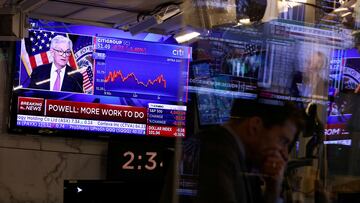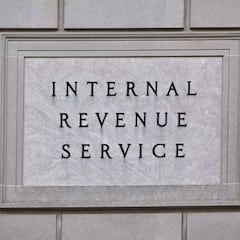Will the Fed raise interest rates again in March 2023? What do the experts say?
The US economy has powered forward despite aggressive rate hikes leading to expectations the Fed would up the ante, but banking turmoil has changed that.

The Federal Reserve began raising interest rates a year ago in response to accelerating inflation numbers. The cost of overnight borrowing between banks had been lowered to nearly zero to bolster the economy during the covid-induced recession, but the past twelve months have seen rates jump to between 4.5 and 4.75 percent.
That is the fastest rise in interest rates since the 1980s to tackle inflation not seen since the same decade. However, the aggressive monetary tightening by the central bank has not had the full scale of intended consequences. While inflation is falling, it has remained sticky, and the US economy continues to power forward with hiring beating expectations.
This led many experts and investors to forecast that policymakers would be more aggressive with the next rate hike, setting interest rates higher and keeping them there for longer. However, turmoil in the banking sector caused in part by higher interest rates has changed the prospectus. Here’s what experts think will be announced on Wednesday after the two-day meeting of the Federal Reserve’s Federal Open Market Committee.
The @federalreserve is starting its 2-day policy setting meeting today, and the big question is whether the central bank will hike, pause, or pivot on its interest rate policy. @steveliesman has the latest @CNBC Fed survey: pic.twitter.com/U9cewoHeCd
— Squawk Box (@SquawkCNBC) March 21, 2023
Fed Chair Jerome Powell warned of higher interest rates than expected
Federal Reserve Chair Jerome Powell gave testimony to Congress earlier in March where he told lawmakers that despite having “covered a lot of ground” that policymakers had “more work to do.” This was because the full effects of their “forceful actions to tighten the stance of monetary policy” had yet to be felt in the wider economy.
The head of the central bank warned that the ultimate level of interest rates were “likely to be higher than previously anticipated” due to the latest economic data coming in “stronger than expected.” This led to the belief that the Fed would jack rates by half a percentage point after their two-day meeting this month.
However, just days later the banking sector would fall into turmoil roiling markets around the globe. Since then, two US regional banks have collapsed, others are on life support and the two largest banks in Switzerland got a shotgun wedding. This initially got hopes up that policymakers would take a pause from raising rates but that is unlikely.
I have now seen Larry Lindsey, Roger Ferguson, Bill Dudley and Rich Clarida--all former Vice Chairs of the Fed--argue that a pause would *increase* financial instability because the market would perceive it as a signal that the underlying situation was worse than realized.
— Jason Furman (@jasonfurman) March 21, 2023
What the experts say about the Fed raising interest rates in March 2023
All things being equal, the better-than-expected economic data that has come in since the onset of the banking crisis would have warranted a half-point increase according to economists at Barclays. However, the fact that higher rates were to a degree part of what pushed Silicon Valley Bank into distress prompting government action.
Many Wall Street economists are expecting the Fed to implement a quarter-point rate hike at the conclusion of their meeting on 22 March to balance the need to move cautiously with the need to continue the fight against inflation. “Risk management considerations will warrant a less aggressive policy hike in March,” the economists at Barclays wrote.
Where will interest rates go in 2023?
Related stories
Similar sentiments were expressed in a recent Financial Times survey about what the Fed’s policy would be in the coming months. Over half of the 43 economists, who were asked just days after US regulators announced emergency measures to shore up confidence in the US banking system, felt that policymakers would continue on the path of monetary tightening.
They see rates staying above 5.5 percent for the rest of the year. Of those surveyed, 49 percent said interest rates will rise to between 5.5 and 6 percent, while 16 percent said interest rates will top 6 percent. Their expectations of further tightening by policymakers is based on the belief that the turmoil in the banking sector has been contained and that a drastic change could damage the Fed’s credibility.


